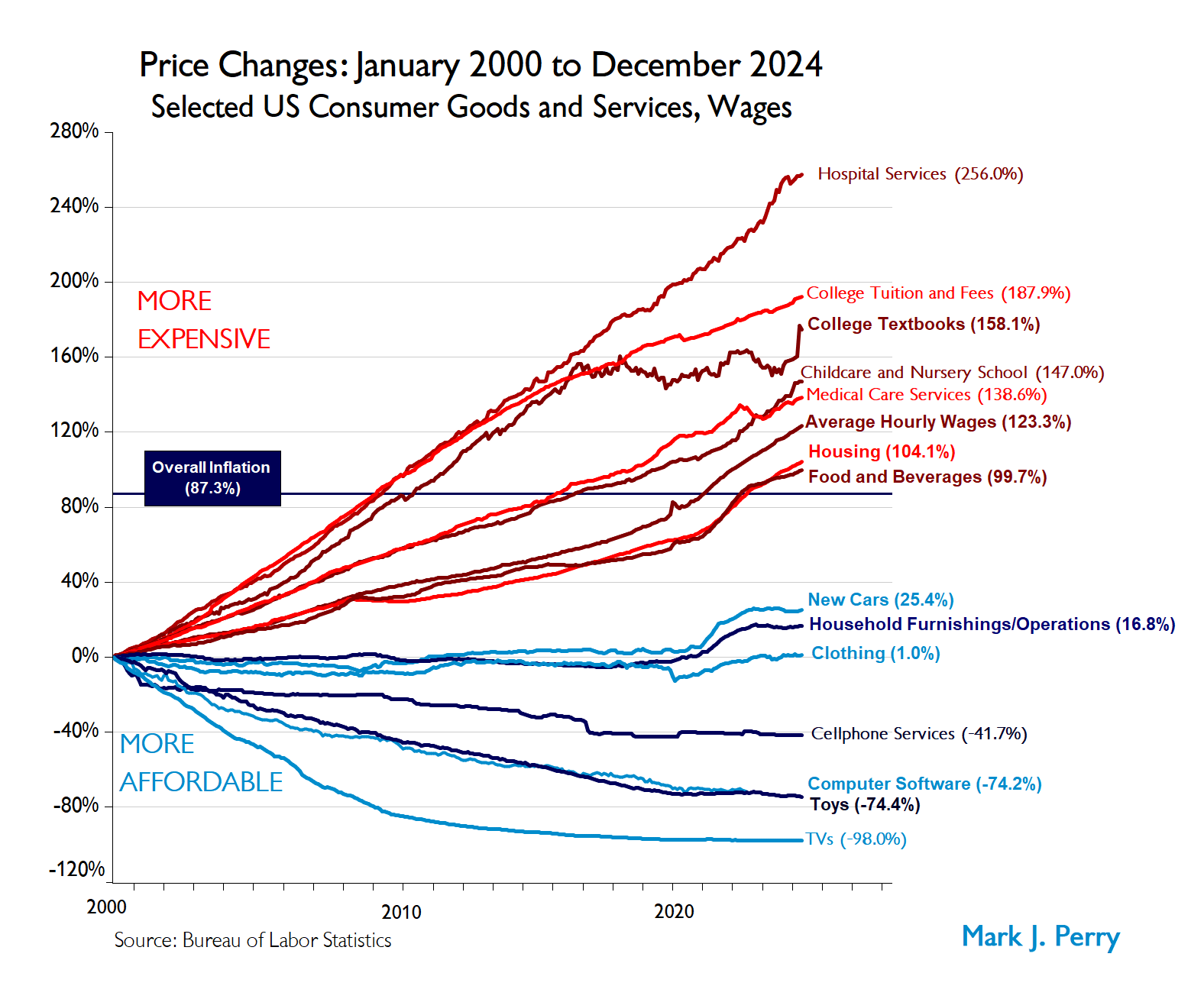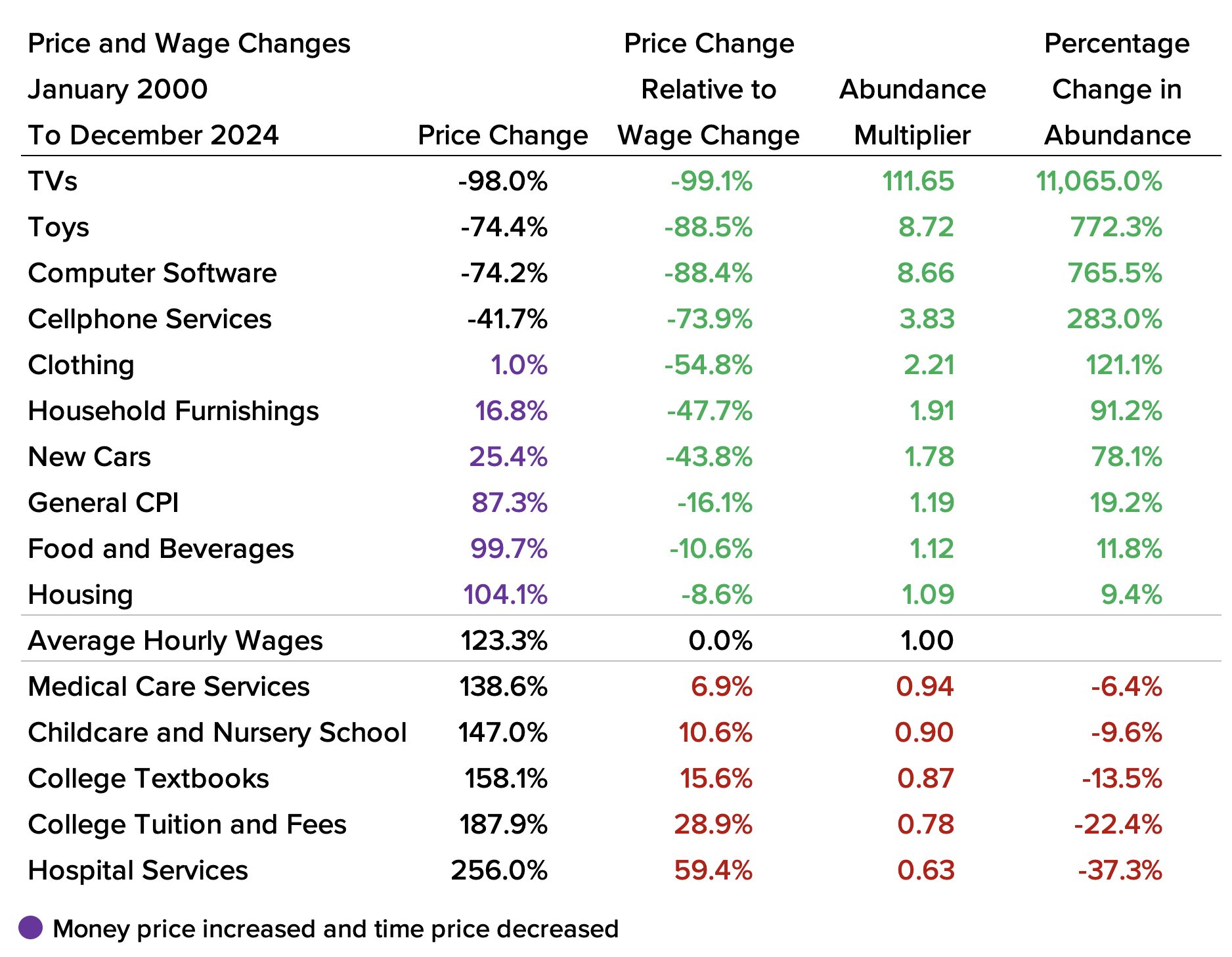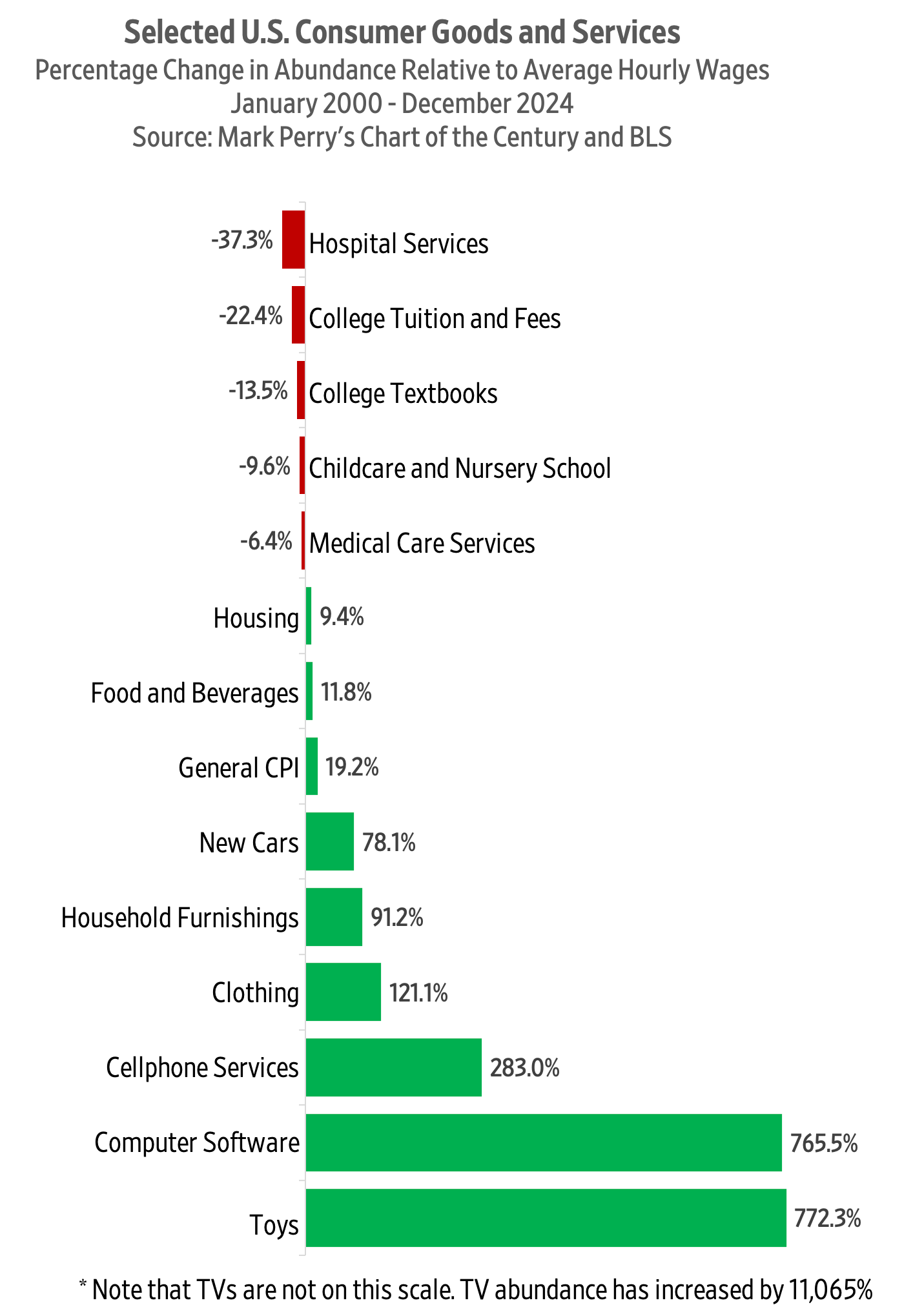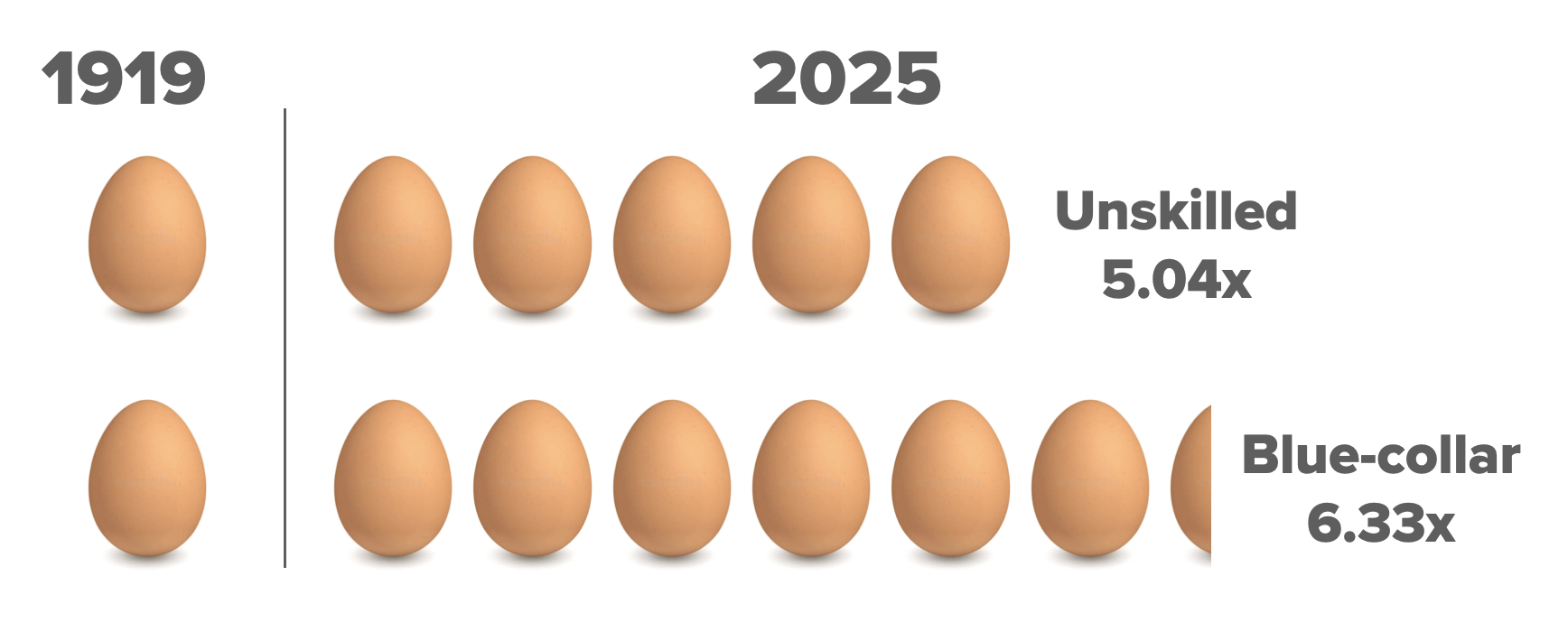“Global grain supplies are projected to reach a record 3.6 billion tons in the 2025-26 season, marking a third consecutive year of growth—though at a slower pace than the average annual growth of the preceding two decades. Wheat supply has returned to its long-term average growth rate, while maize supply has rebounded after recent setbacks but remains below its historical trend. In contrast, supplies of rice and soybeans are projected to grow at about their long-term growth averages, building on last season’s significantly elevated levels.”
From World Bank.
Time Pricing Mark Perry’s Latest “Chart of the Century”
Always compare prices to hourly wages to understand the true change in living standards.

Professor Mark Perry recently posted his updated “Chart of the Century,” featuring price and wage data from the Bureau of Labor Statistics (BLS). The chart tracks 14 items over the 24 years from January 2000 to December 2024 and includes both the overall inflation rate and changes in average hourly wages.

To examine the data from a different perspective, we calculated the change in time prices of these 14 items relative to the change in the average hourly wage. We then determined the abundance multiplier—a value that indicates how many units of an item you could buy in 2024 for the amount of work time it took to buy one unit in 2000. If there were no change, the abundance multiplier would equal one. A value below one indicates decreasing abundance, while a value above one reflects increasing abundance. We also calculated the percentage change in abundance for each item.

This analysis illustrates that things can become more expensive in dollar terms while simultaneously becoming more affordable in time prices. For instance, while the general Consumer Price Index (CPI) rose by 87.3 percent, average hourly wages increased by 123.3 percent. As a result, time prices fell by 16.1 percent. For the time it took to purchase one CPI basket in January 2000, a consumer could buy 1.192 baskets in December 2024—an abundance increase of 19.2 percent.
Notably, categories such as housing, food and beverages, new cars, household furnishings, and clothing all increased in money prices. However, after adjusting for rising wages, they became more affordable in time-price terms. Although 10 of the 14 items rose in nominal prices over the 24 years, only five had a higher time price when accounting for the 123.3 percent increase in hourly wages.
We also created a chart showing the percentage change in abundance for the general CPI and each of the 14 tracked items:

Find more of Gale’s work at his Substack, Gale Winds.
Sign up for our newsletter to receive these emails in your inbox.
Have Eggs Ever Been More Expensive?
The money price of eggs is higher than in 1919, but the time price is lower.

The high price of eggs may have incentivized a burglar to heist 100,000 eggs from the back of a trailer in Pennsylvania. Have eggs ever been more expensive? The surprising answer is yes—much more. In 1919, eggs were five to six times more expensive: A dozen eggs were 61 cents, or around 5 cents per egg. Wages for unskilled workers at the time were around 25 cents per hour, so these workers had to spend around 12 minutes to earn the money to buy one egg.

Eggs at Walmart at the time of writing (Feb 14) are $8.32 per dozen, but unskilled worker wages and benefits have increased to $17.17 an hour. That would put the time price for one egg at 2.4 minutes. The time price for unskilled workers has decreased by 80 percent since 1919. For the time required to earn the money to buy one egg in 1919, unskilled workers get five today. They’re 400 percent better off.
How about blue-collar workers? Wages for blue-collar workers in 1919 were around 43 cents per hour, so an egg cost them 7 minutes. They’re now earning $37.15 an hour, so their time price for one egg is 1.1 minute. The time price for skilled workers has decreased by 84 percent since 1919. They get 6.33 eggs today for the time it took to buy one egg in 1919. They’re 533 percent better off.
Yes, the money price of an egg today compared to 1919 is high, but the time price is much lower. Always compare the money price to hourly wages to see the time price, since that is the true price we pay for things.
Why did the price jump so high? The USDA recently ordered the culling of millions of chickens in response to worries about bird flu. Reduce supply like that and prices are bound to increase.
Fortunately for us, chickens lay lots of eggs, so the market should be resupplied soon. I have such great faith in our egg-laying friends and free-market entrepreneurs that I’m willing to bet $1 that the time price of eggs will be lower in February 2026 than today. Any takers?
Find more of Gale’s work at his Substack, Gale Winds.
